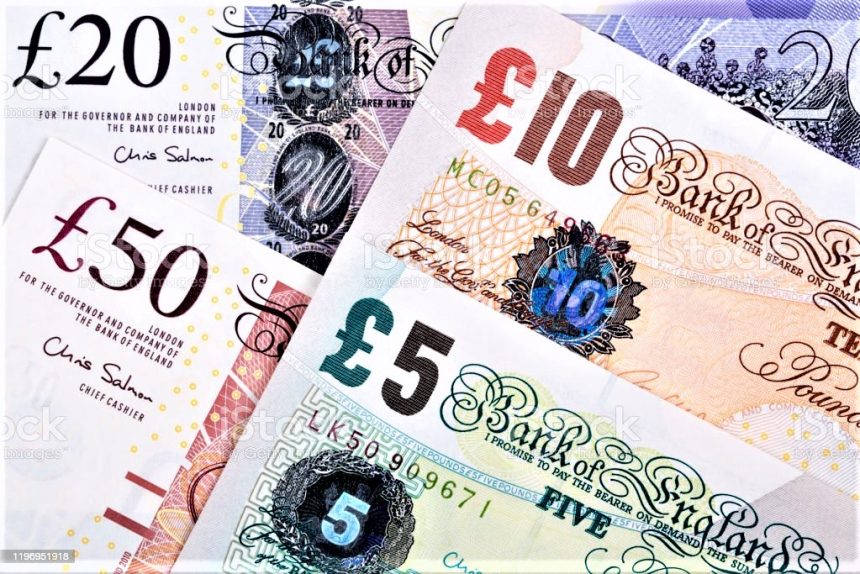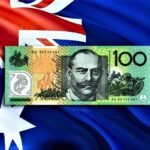Pound sterling is expected to fall sharply as the UK’s fourth quarter GDP dropped by 0.3%
The pound sterling (GBP) fell in Thursday’s early European session. As the UK economy entered a technical recession. The preliminary Gross Domestic Product (GDP) estimates from the UK Office for National Statistics (ONS) suggest. That the economy contracted by 0.3% in Q4. This signifies that the UK economy has contracted for the second consecutive quarter. Which is the definition of a technical recession.
Due to lower inflation, slower wage growth, and a bleak economic outlook, the Bank of England may consider significant rate cuts.
Data could It also raises the prospect of early rate cuts by the Bank of England (BoE). Which may be eager to implement growth boosting policies.
The broader attractiveness of the Pound Sterling has decreased as most economic indicators, aside from the economic contraction, lead to dramatic rate reduction by the BoE to avoid further decline. When predictions of the BoE turning dovish rise, the pound sterling tends to suffer from foreign outflow.
Consumer price inflation remained constant in January, but investors expected it to accelerate more. Also, BoE Governor Andrew Bailey believes price pressures will be brought under control by Spring.
While wage growth and service inflation remain tilted to the upside and so unlikely to bring inflation down to the 2% objective, the mild drop Wage growth momentum is readily obvious.
The US dollar is correcting as investors comprehend the Fed’s aggressive rhetoric.
Meanwhile, the US dollar has experienced some backfilling following a big surge sparked by cooling expectations of early Fed rate reduction. Investors now expect the Fed to keep interest rates unchanged in the range of 5.25%-5.50% until the June monetary policy meeting.
Daily Market Movers: Pound Sterling Drops from Day’s High.
Pound Sterling faces a strong sell-off as the UK The ONS stated that the GDP decreased by 0.3% in the last quarter of 2023. Investors expected a 0.1% slowdown in growth.
The UK GDP decreased in the third quarter of 2023, indicating that the country is in a technical recession.
This has increased expectations of early rate reduction by The Bank of England, since the economy urgently requires the stimulus generated by lower borrowing costs.
This week, a sharp slowdown in wage growth and consistent annual inflation numbers fueled predictions of an early unwinding of the Bank of England’s restrictive monetary stance.
Meanwhile, the inflation outlook softened on Wednesday when BoE Governor Andrew Bailey stated that inflation will fall to the target by spring.
Andrew Bailey cautioned that wage growth and service inflation remain too high to be compatible with the central bank’s 2% target.
Bailey stated that policymakers will support rate decreases only after seeing evidence that wage growth is slowing.
In December, manufacturing production increased by 0.8% month on month, as expected by investors. A lethargic performance. On an annual basis, economic statistics expanded at a faster rate of 2.3%, exceeding predictions of 0.6% and the previous figure of 1.9%.
Monthly Industrial Production increased by 0.6%, compared to 0.5% growth in November. Investors predicted a 0.1% drop. Surprisingly, yearly industrial statistics grew by 0.6%, despite investor expectations of a 0.1% drop.
US Dollar Index (DXY) has gradually retreated from a three-month high of 105.00.
On the US front, the US Dollar Index (DXY) has gradually retreated from a three month high of 105.00. As investors recognize that the Federal Reserve would not decrease interest rates sooner.
The broader appeal of the US Dollar is positive. As investors now expect only three rate cuts this year, as guided by the Fed, following stubborn inflation data.
Moving forward, January’s Monthly Retail Sales data will guide the US Dollar. Which will be released at 13:30 GMT. According to projections. The economy contracted by 0.1% in February, following a 0.6% increase in January.









